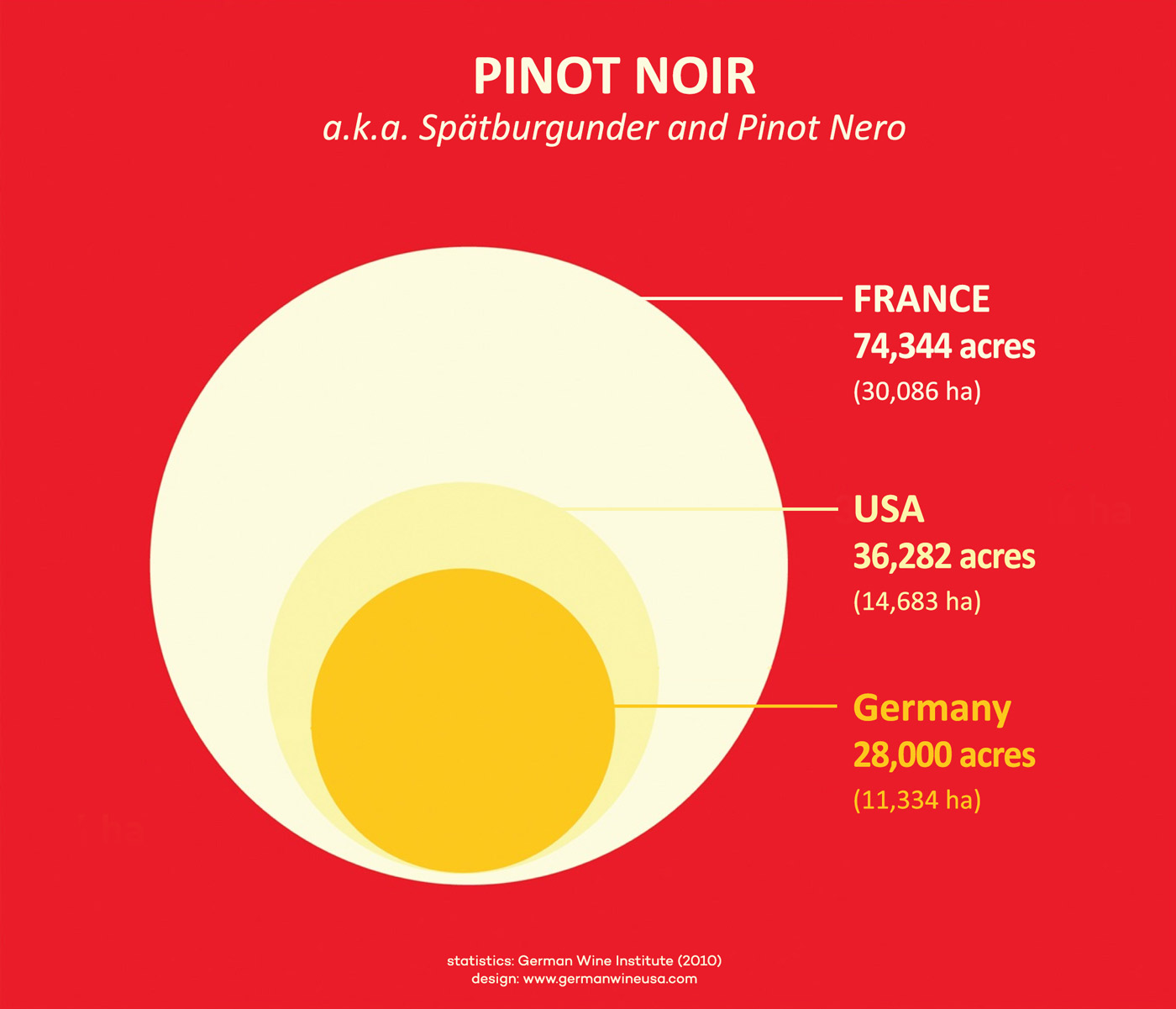Pinot is a little bit misunderstood. Recent findings have shown us that all Pinot varieties are not just related but are, in fact, the same! Time to get to the bottom of the story of Pinot, an ancient grape that has boggled us for centuries.
The Big Secret About Pinot
As it happens, Pinot Noir, Pinot Blanc, and Pinot Gris are not just related, they are the same. Each variety can be grouped under an overarching variety simply called ‘Pinot’ with each variation being mainly identified by their color. This news could even change the way we perceive certain wine regions, such as Oregon, that specialize in Pinot Noir and Pinot Gris.
Wine Grapes Greatest Achievement
If you’ve seen the recent book, Wine Grapes, perhaps you’ve stumbled across the Pinot pages. The book cites DNA testing on grapes to confirm that Pinot Noir, Pinot Gris, and Pinot Blanc are actually all just mutations of the same variety. Ampelography (studying grape vines) has shown that there are six primary clonal variations:
- Pinot Noir: (a.k.a. Pinot Nero) A hard-to-grow black wine grape with green flesh that originated around Burgundy.
- Pinot Gris: (a.k.a. Pinot Grigio) A pink-skinned wine grape that produces white wines to rosé-colored wines.
- Pinot Blanc: (a.k.a. Pinot Bianco) A white grape that often has been confused with Chardonnay.
- Pinot Meunier: A black-skinned grape that ripens a bit earlier than Pinot Noir and is mostly used in Champagne.
- Pinot Teinturier: A black-skinned grape with red flesh that was observed in vineyards periodically over the last 100 years.
- Pinot Noir Précoce: A mutation of Pinot Noir that ripens 2 weeks earlier than regular Pinot Noir.
Pinot is Much Older Than Cabernet Sauvignon
The reason for all this variation is because Pinot is super old, over 1000 years old. And while it seems odd that Pinot Noir is such a mutant grape, it’s been shown that over a long period of time these things just happen. In fact, if you look at other really old grape varieties, such as Muscat Blanc (a.k.a. Moscato), you’ll find that it has a lot of variation too. For example, there is a red Muscat grape!
Mutations and crossings with other grapes aren’t a bad thing, in fact this is what brought us Cabernet Sauvignon, which is a natural crossing of Sauvignon Blanc and Cabernet Franc that happened in the 1700’s.
Pinot Noir
A History of Obsession
The great obsession with Pinot Noir was first documented in the 1300’s as a side note to people’s general distaste for the other grape varieties growing in the Burgundy wine region of France. At the time, vineyards were grown in Clos which are walled vineyards. It has been suggested that Clos were erected to control disease and isolate vines. This theory makes sense because it was during the height of the black plague that walled monasteries and Clos were being created.
One of the earliest mentions of Pinot Noir was a complaint about a harvest worker who failed to separate the Pinot Noir grapes from the other wine grapes during the harvest. Most likely, the worker was beaten on the back for this offense; the standard punishment of the era.
Many Different Clones of Pinot Noir
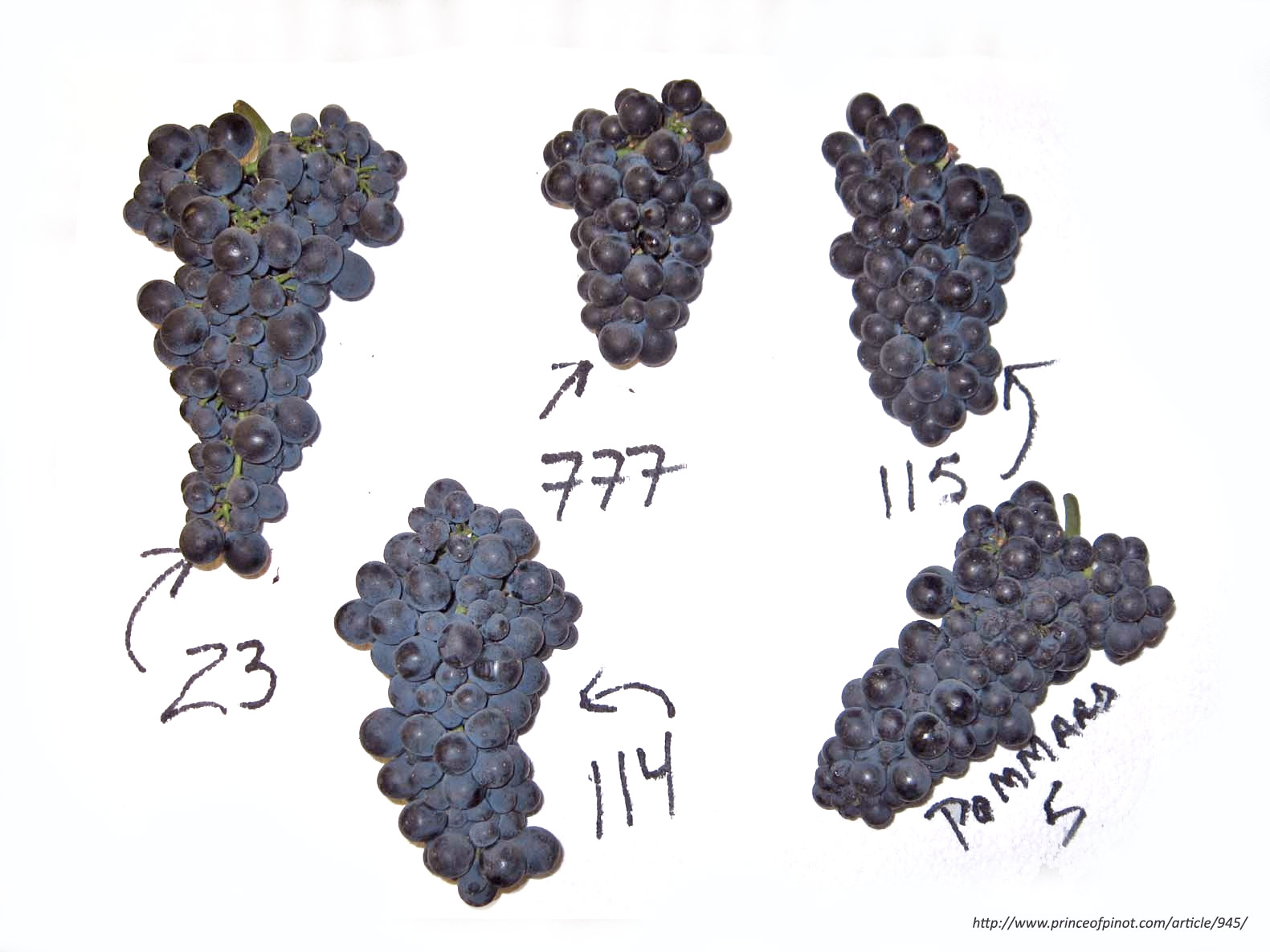
Dr. William Gaffney, at princeofpinot.com, documented how different Pinot Noir clones appear in this photo. Notice the size of berries, size of bunches and how closely compacted the grapes are. The differences play into the flavor of Pinot Noir wine.
We talk a lot about clonal selection when it comes to Pinot Noir. This is because winemakers have come to realize that the different clones result in both different quality levels and tastes in wine. Some clones of Pinot Noir make bold and robust wines while others are pale-colored but offer the most amazing floral aromas. There are over 40 different clones of Pinot Noir documented in the Catalogue of Grapevine Varieties and Clones and about 15 of these clones are popular throughout the world because of their quality.
Popular Pinot Noir Clones
To give you a snapshot of a few of the popular clones, here are some great descriptions created by Melville Vineyards in Sta. Rita Hills:
- Dijon Clone 113 One of the “teen” series of [Dijon] clones, clone 113 is perhaps the most elegant with perfume aromatics. It is typically seen as an aromatic component with very high-toned elements in the nose. When properly managed, the wine can possess nice weight and body as well. To amplify the prettiness of the wine, we generally de-stem the entirety of the fruit.
- Dijon Clone 115 By far the most widely planted of this clonal grouping, clone 115 is undeniably the most important clone in the past decade or so of California vineyard development. If we were forced to select only one clone, we would unanimously agree upon this one. Clone 115 works great on its own, and serves as the spine to our entire pinot noir program.
- Pommard Clone 5 The Pommard selection has been available in California for a number of years, and can often work great as a “stand-alone” clone. It is sometimes known for having a meaty/gamey edge, but for us, it typically expresses itself through very pure dark fruits.
- Dijon Clone 777 This clone is experiencing a significant surge in planting similar to clone 115. It is known for being very dark and rich, and potentially appropriate to be produced on its own. While quite dark, it has yet to produce the velvety richness professed by a number of colleagues on our estate thus far. It has, however, resulted in very intriguing and complex wines that merit careful attention.
Melville Vineyards Pinot Noir Clones
Pinot Gris
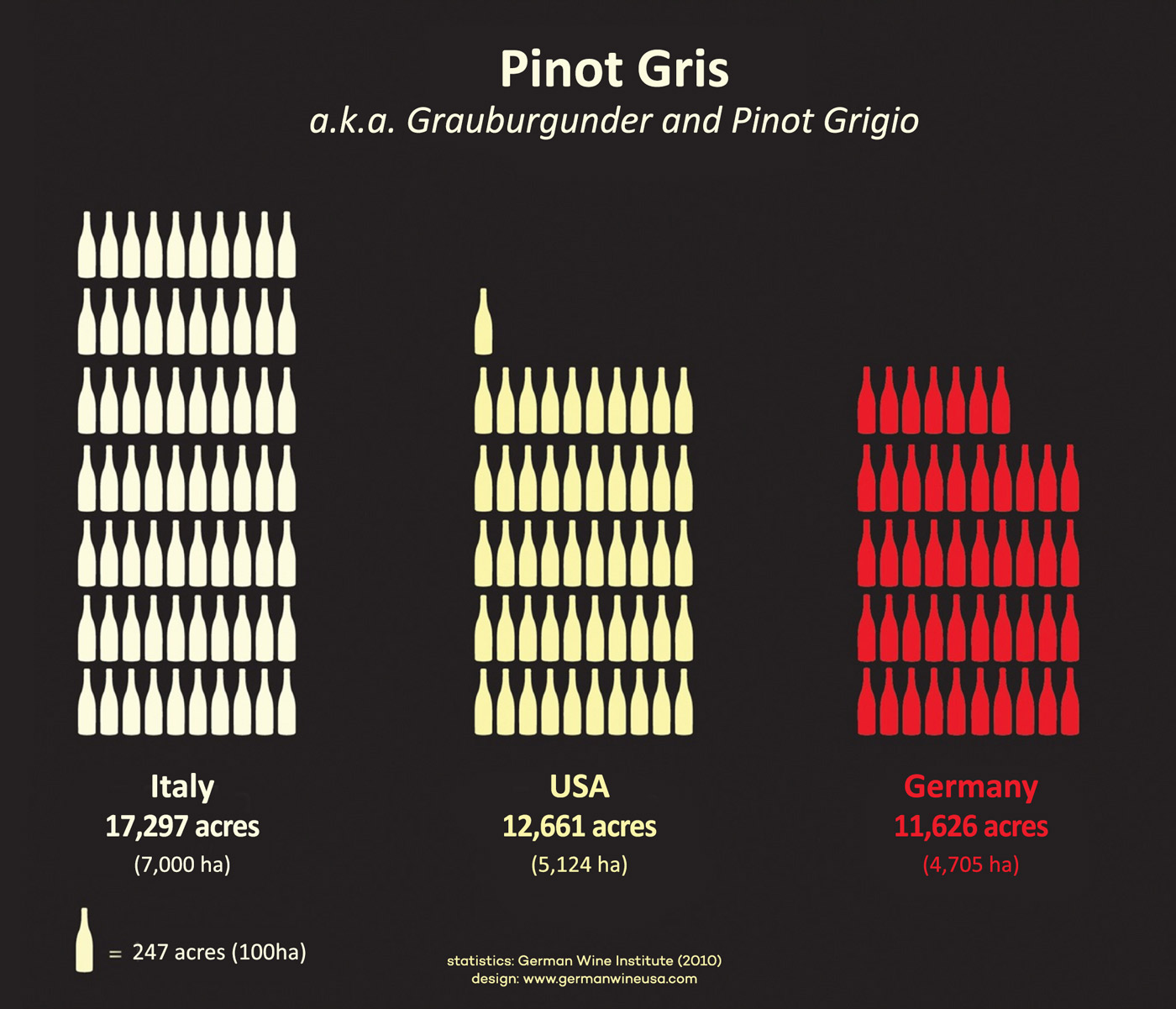
A pink-skinned grape that has such a large range of potential flavors that it’s notoriously one of the hardest wines to blind taste in sommelier exams. Pinot Gris has a much harder-to-track history, because it had so many names over the last millennium. What we do know about it is that the Pinot Gris berries range quite a bit in color, from a pale pinkish to a deep purple, similar to Pinot Noir.
Since Pinot Gris is made like white wine, it has long been known as a white wine. However, if you were to leave the skins on during the fermentation for a while, you’d end up with a true rosé wine like this one:

Fossil & Fawn is the wine brand of Crowley Station Vineyards in Oregon and this… believe it or not, is Pinot Gris.
Pinot Gris has great potential in the modern wine world because it can be crafted into a wide diversity of styles.
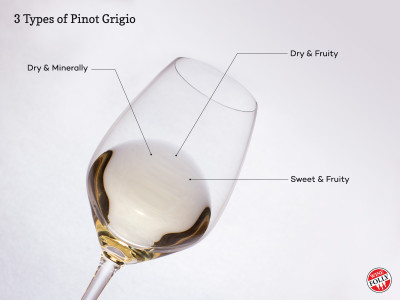
3 Main Styles of Pinot Gris
Learn more about Pinot Gris and how diverse this wine can be depending on where it’s grown and who has made it.
3 Main Styles of Pinot Gris
Pinot Blanc
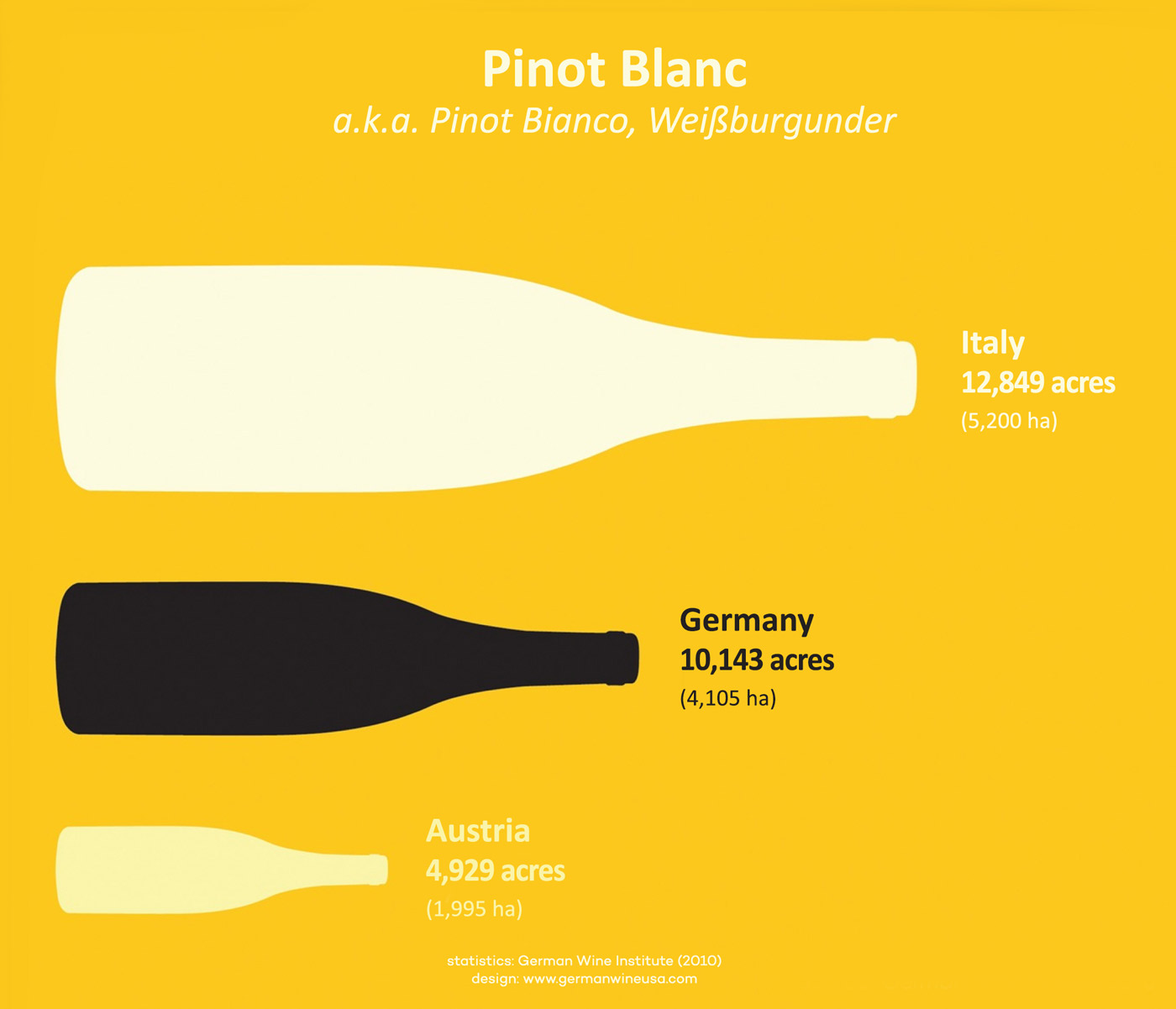
The least talked about variety of the top three mutations of Pinot is Pinot Blanc. Pinot Blanc is perhaps the wine that we imagine great Pinot Grigio to be: light, fruity, and with lots of mouth quenching acidity. Despite the potential in this fine wine, it’s still not very popular. Fortunately, for the time being, this also means that Pinot Blanc offers some of the most exceptional value of all the Pinots. You can find this wine mostly in Italy, Germany, Austria and France.
- In Italy, it’s called Pinot Bianco or Weissburgunder and grows in the north, particularly in Alto Adige where it makes exceptional crisp white wines with notes of lemon, beeswax and honeycomb.
- In Austria, it’s called Weißburgunder and it ripens very well in the continental climate and you can find it blended with grapes like Chardonnay and sometimes even aged in oak to produce rich creamy flavors.
- In Germany, Pinot Blanc is called Weißburgunder and it grows well in warmer areas that aren’t suitable for Riesling. Expect light, dry, crisp wines that will make any hot afternoon a delight.
- In France, it’s the common white blend of Alsace and although it’s not considered one of the great whites of Alsace, it produces subtly smoky wines with floral peachy aromas.
Sources
Catalogue of Grapevine Varieties and Clones published by ENTAV-INRA
Special thanks to Dr. William Gaffney at the princeofpinot.com who let us display his photo.
A more geeky and complete list of Pinot Noir Clones taken from the Catalogue mentioned above.
